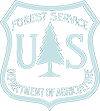Marketable Products
Click on a Value below to see what Actions you can take.Identifying and enhancing marketable products to reduce fire fuels
Identifying and enhancing marketable products to reduce fire fuels is one of the values identified in the Cohesive Strategy in the Southeast. In additional to expanding traditional markets to reduce hazardous fuels and manage flammable understory, potential opportunities exist outside the traditional use of forested land for landowners and managers. These include: agroforestry, specialized forests products, biomass-based energy, and CO2 sequestration. To be successful we need to engage those working in this environment and others who have not previously considered themselves stakeholders in wildland fire management.
The following actions contain additional tasks that may be appropriate for you to be a part. Each describes the activity along with links and resources that will be useful in moving forward.
There are 9 Actions Leading to This Value. Click on an action below to see how you can get involved and make a difference.
-
Utilize prioritization in Southern Wildfire Risk Assessment (SWRA) and other efforts to identify and treat wildland fuels to create tactical fuel breaks in areas that facilitate tactical defense of human communities or ecological values and services from wildfire.
Provide education and outreach to forest products industry as to encourage treatment of wildland fuels.
- Southern Group of State Foresters (SGSF)
- U.S. Department of the Interior (DOI)
- U.S. Forest Service (USFS)
-
Use alternative management techniques (mechanical, grazing, etc.) to reduce fire loads where fire is not feasible or desirable.
Reduce wildfire threat in areas where prescibed fire is not feasible.
Increase traditional forest harvest to reduce wildfire threat.
Coordinate fire mitigation/harvest activities between public and private lands.
Target non-fire Federal programs to address fuels reduction and alternative fuels treatments.
- U.S. Department of Defense (DoD)
- U.S. Department of the Interior (DOI)
- U.S. Forest Service (USFS)
Compile info on costs and benefits of techniques to reduce hazardous fuels.
Target FEMA mitigation funds in high priority areas to reduce risk.
- EMA (EMA)
- Federal Emergency Management Agency (FEMA)
- Southern Governors' Association (SGA)
- Wildland Fire Leadership Council (WFLC)
-
Increase removal of potential hazardous fuels through harvesting and mechanical treatments.
Create programs that develop markets for landowners to reduce wildfire risk.
Utilize SouthWRAP to target economic development programs to recude risk.
- RDC (RDC)
- Southern Governors' Association (SGA)
- Southern Group of State Foresters (SGSF)
Coordinate www.forestproductlocator.org with priority areas for hazard fuels reduction.
Develop programs targeting loggers in order to help maintain the logging infrastructure.
-
Work with landowners to manage land for hazardous fuels reduction to reduce wildfire risk.
Work with insurance industry to reduce wildfire risk.
Work with forest certification groups to reduce wildfire risk.
Coordinate fuels reduction/harvest activities between public and private lands.
- Southern Group of State Foresters (SGSF)
- U.S. Department of the Interior (DOI)
- U.S. Forest Service (USFS)
Create prescribed burn associations to increase prescribed fire.
- Prescribed Fire Council (PFC)
- Southern Group of State Foresters (SGSF)
Coordinate activities of willing landowners to jointly reduce wildland fuels.
Target underserved landowners and develop strategies to address high risk landscapes.
Address high wildfire risk on investment owned lands (TIMOs and REITS).
-
Work with landowners to manage lands to be resilient to wildfire while supporting traditional forest products markets.
Make policy changes to federal programs to further expand fuels reduction work.
Integrate programs between urban forestry and forest management to target small woodlot management and fuels reduction.
- Southern Group of State Foresters (SGSF)
- U.S. Forest Service (USFS)
Ease access to restoration funding after wildfires on both public and private lands.
Understand impact of taxes to landowners ability to manage lands.
Identify cultural values in local CWPPs.
Utilize SRS info on family forest opportunities to manage for wildfire risk reduction.
Host "Community Days" at Department of Defense (DoD) installations.
Identify cultural values in local CWPPs and related intergovernmental planning documents
- National Association of Counties (NACO)
- Southern Group of State Foresters (SGSF)
- U.S. Department of the Interior (DOI)
- U.S. Forest Service (USFS)
Encourage interactive educational programs that highlight the multicultural heritage of fire in the Southeast.
- U.S. Forest Service (USFS)
Integrate programs between urban forestry and forest management to address wildfire.
Encourage interactive educational programs at both the government and non-governmental levels that highlight the multicultural heritage of fire in the Southeast.
-
Coordinate between landowners and managers to address wildland fire.
Work with planners/developers to establish best practices at all levels.
-
Keep prescribed fire as a valid management tool through working with regulatory agencies.
Work with regulatory agencies to reduce constraints on prescribed burning.
- Southern Group of State Foresters (SGSF)
- U.S. Department of the Interior (DOI)
- U.S. Forest Service (USFS)
Work with legislative officials to reduce constraints on prescribed burning.
- Prescribed Fire Council (PFC)
- Southern Group of State Foresters (SGSF)
Utilize and promote best burning practices
- Forest Landowners Association (FLA)
- Prescribed Fire Council (PFC)
- Southeastern Association of Fish and Wildlife Agencies (SEAFWA)
- Southern Group of State Foresters (SGSF)
- The Association of Consulting Foresters (ACF)
- U.S. Department of Defense (DoD)
- U.S. Department of the Interior (DOI)
- U.S. Forest Service (USFS)
Continue to support the work of the SERPPAS air quality and prescribed fire working teams.
Work among appropriate agencies to expedite public alerts on smoke related issues.
- Southern Group of State Foresters (SGSF)
- U.S. Department of the Interior (DOI)
- U.S. Forest Service (USFS)
- air-quality-regulators
- wildland-and-structural-fire-departments
-
Encourage greater public smoke awareness through outreach and understanding.
Collect success stories that highlight the benefits of prescribed burning operations compared to wildfires
- Fire Learning Network (FLN)
- Prescribed Fire Council (PFC)
- Regional Strategy Committee (RSC)
- The Nature Conservancy (TNC)
-
Control invasive species that alter fire regimes and ecosystem function.
Look to state forest and wildlife action plans to target high wildfire risk geographies.
Engage landowners in the identification and control/eradication of highly flammable invasive species.
Utilize FS Forest Health Program funds on areas of high wildfire risk.
- U.S. Forest Service (USFS)
Provide education programs/materials for homeowners and landowners that target the most destructive invasives.










